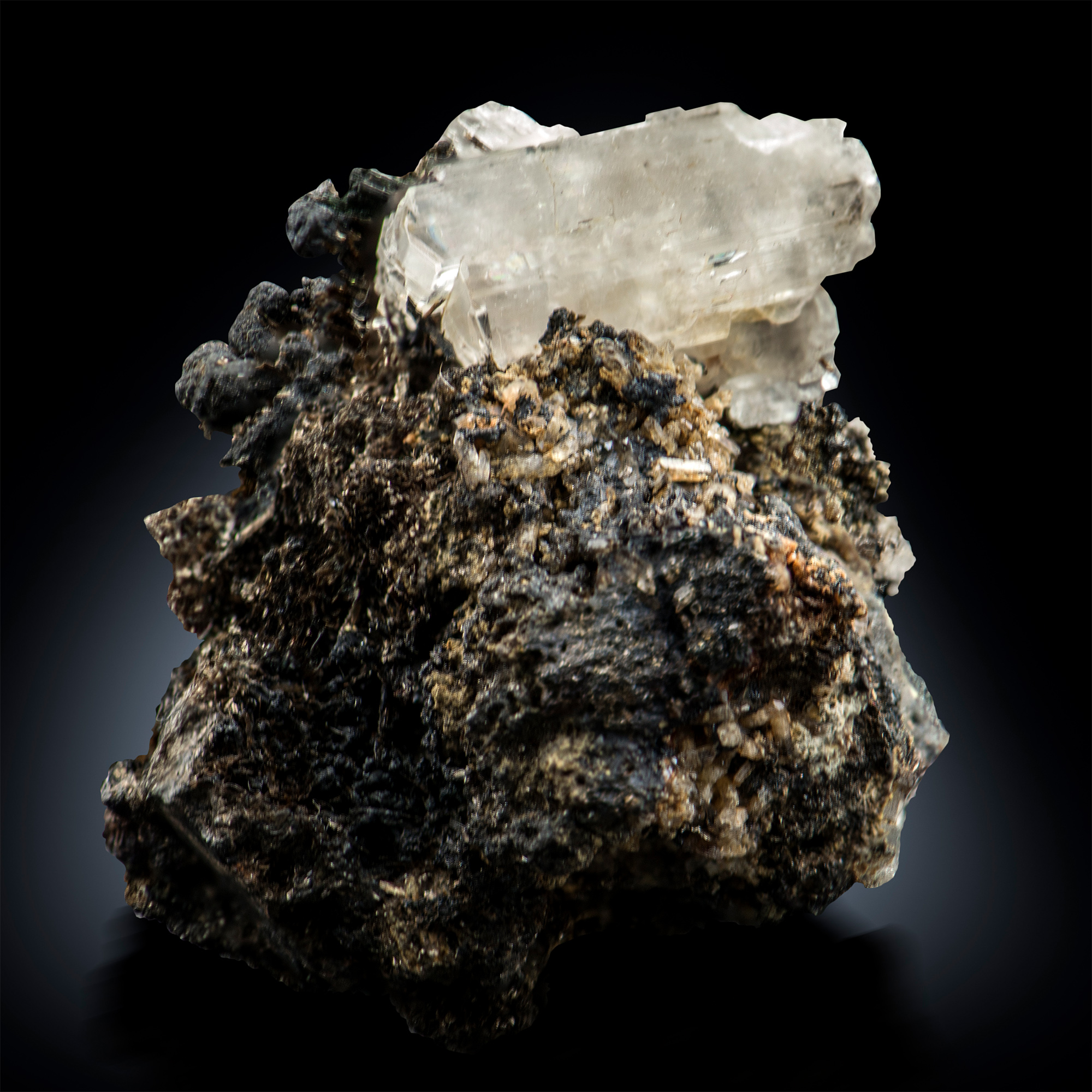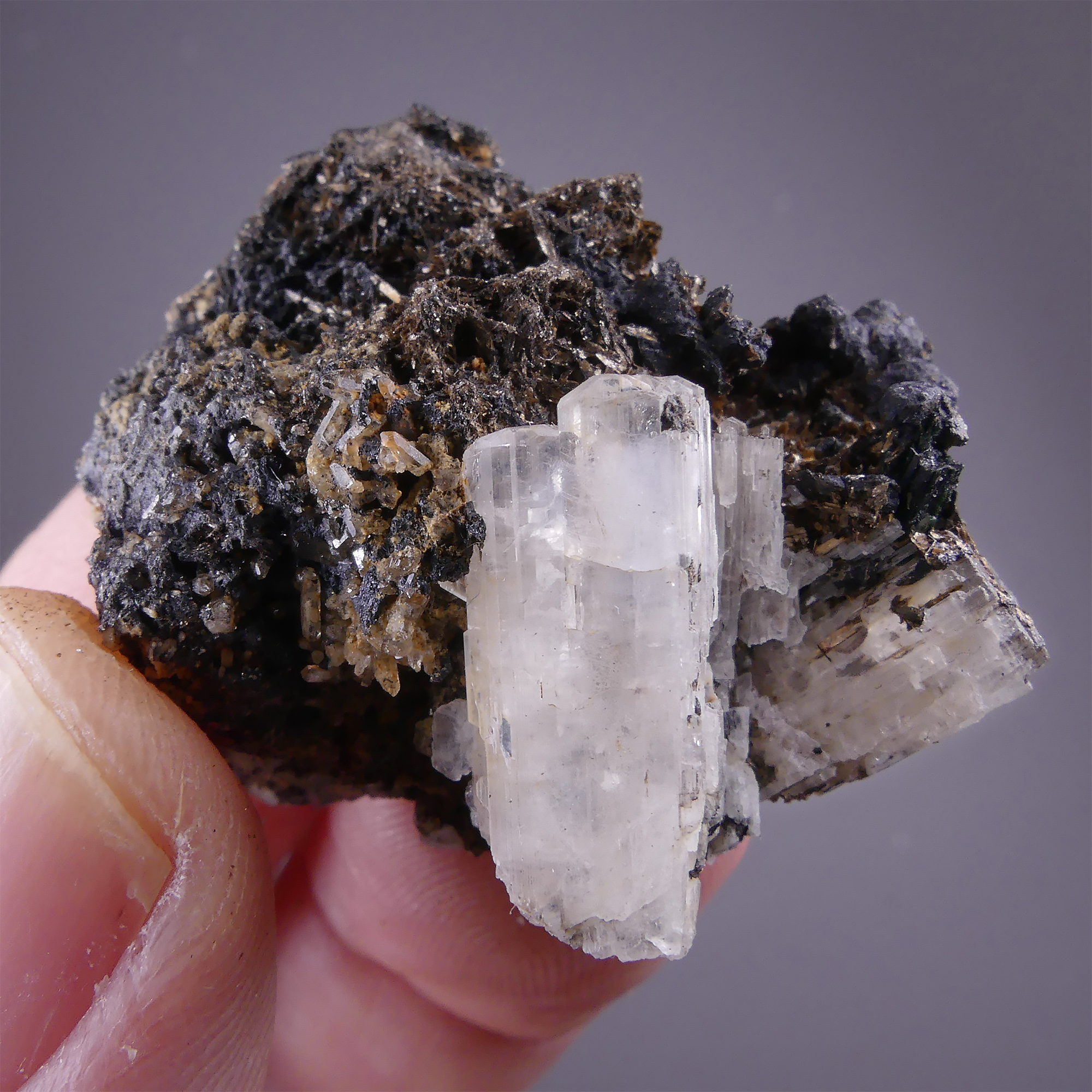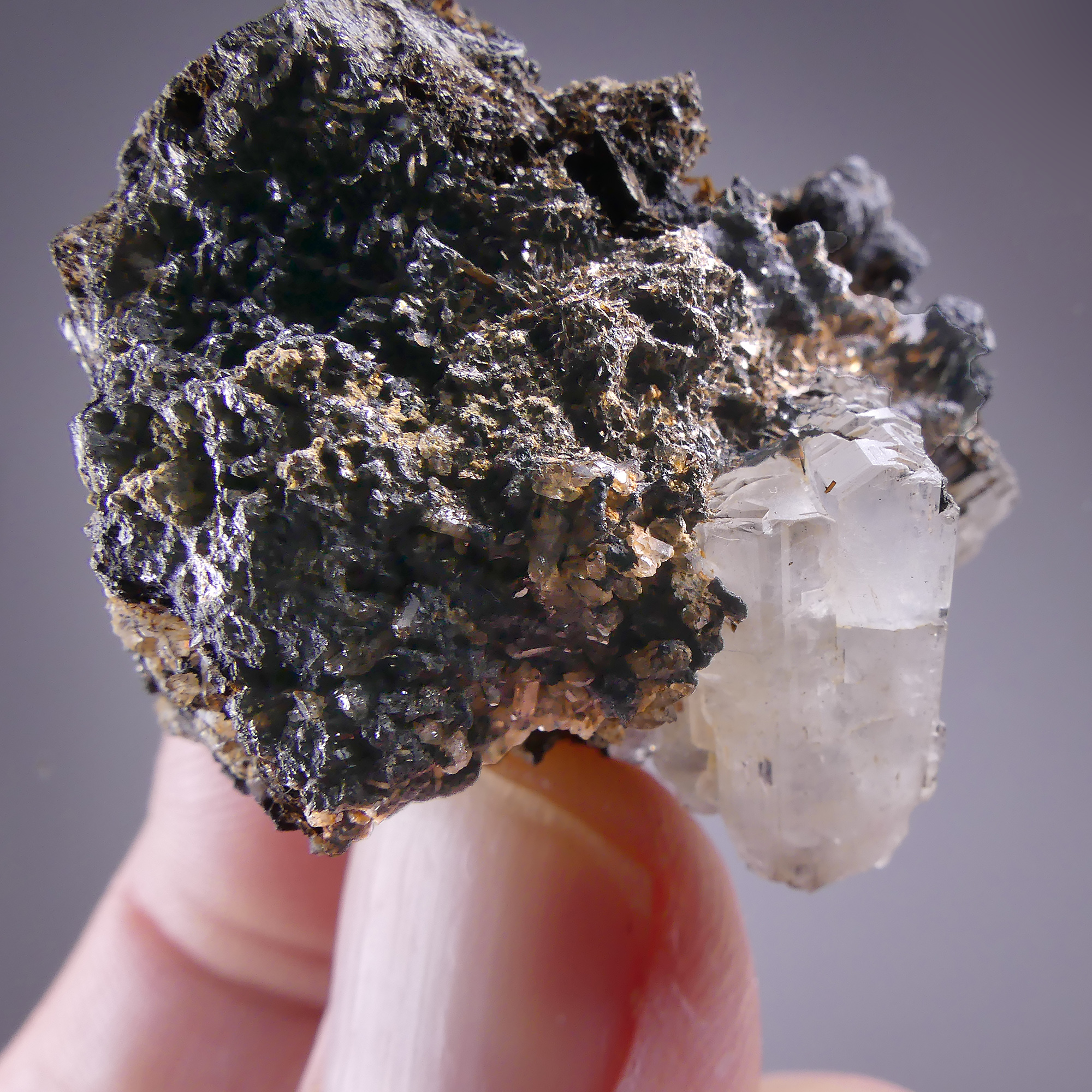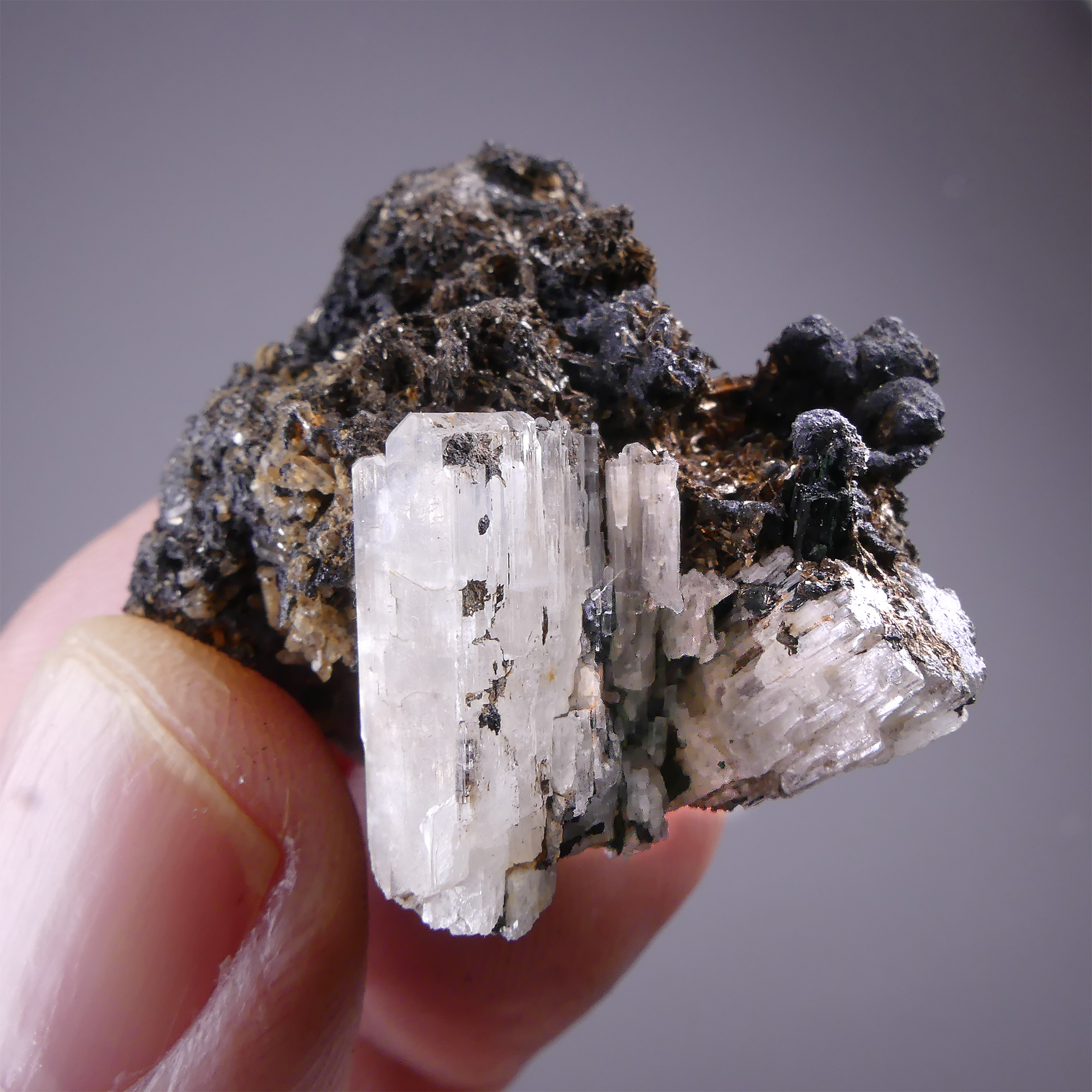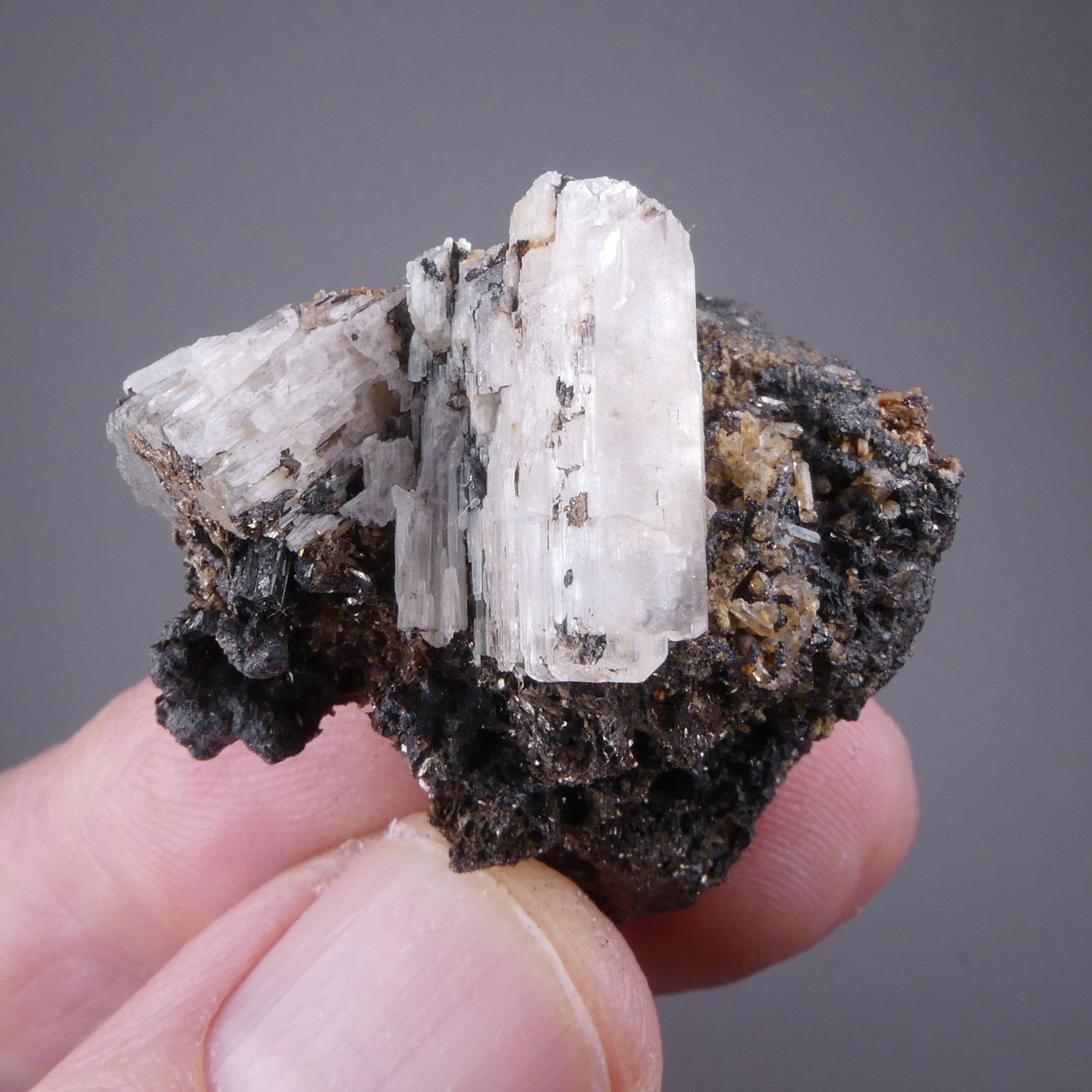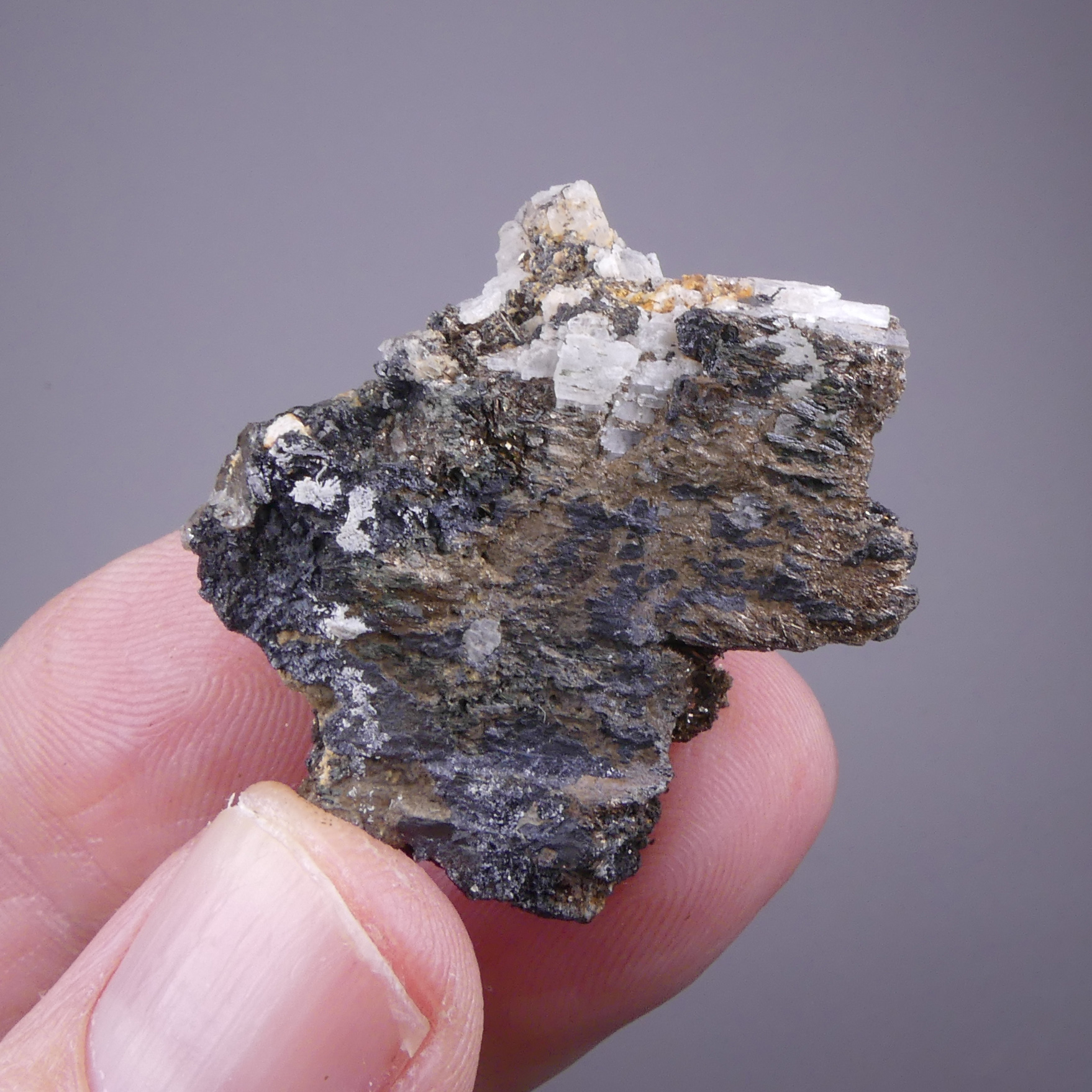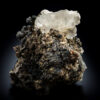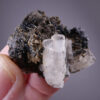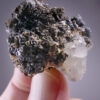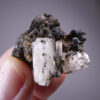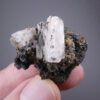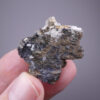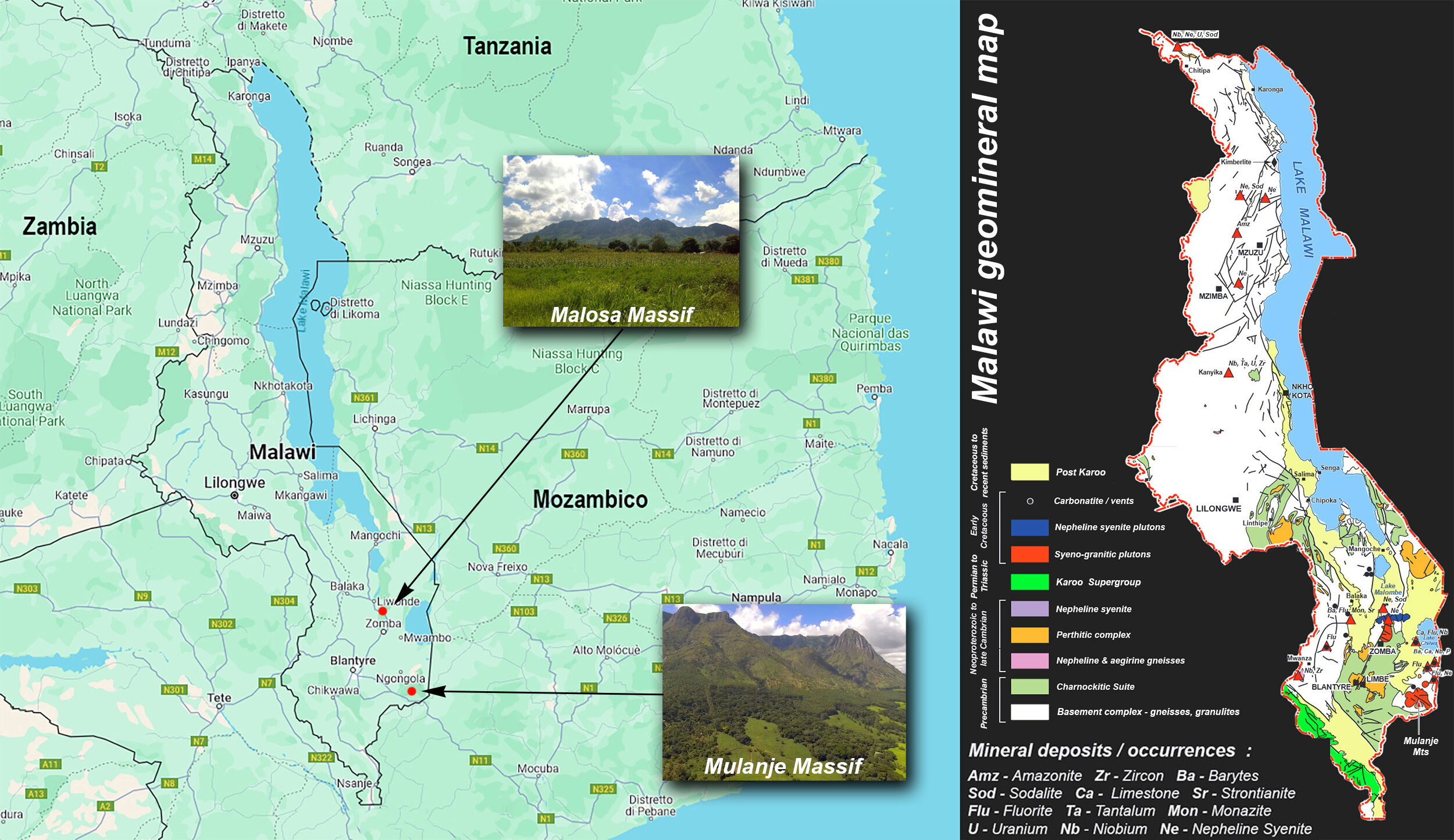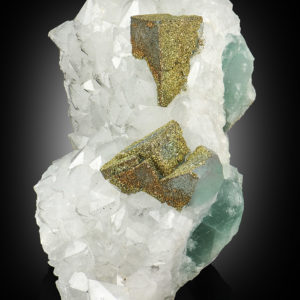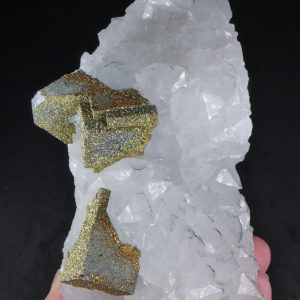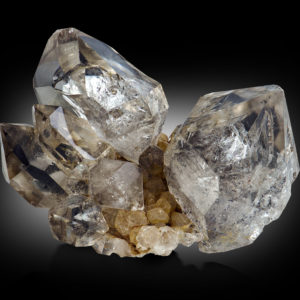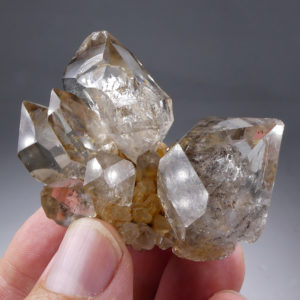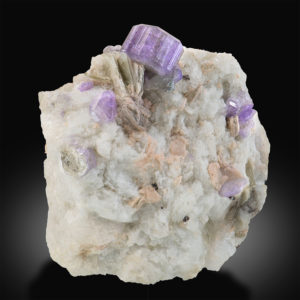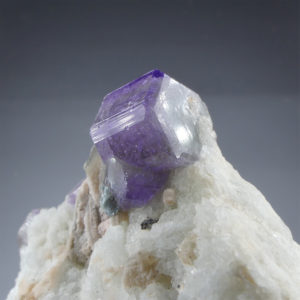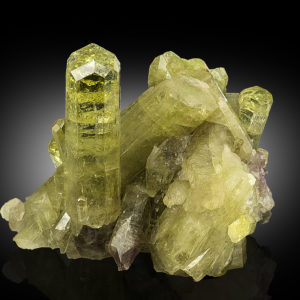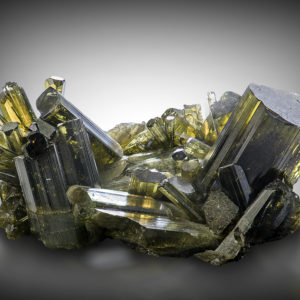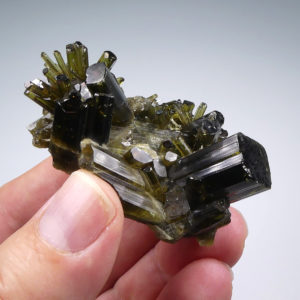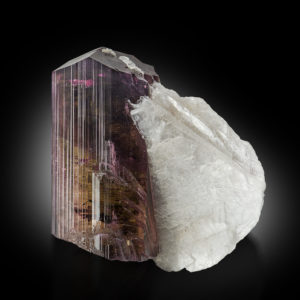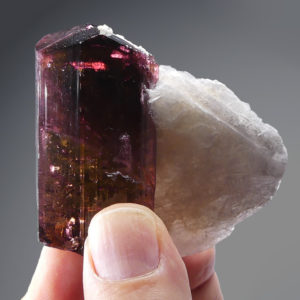EPIDIDYMITE – Malawi – GFS0405
In stock
€ 200,00 +TAX
Epididymite
Mulanje Massif, Mulanje, Southern Region, Malawi
3x3x1,5 cm. (main Epididymite 1,6×0,7 cm.)
This specimen is specifically dedicated to those looking to enhance their collection with pieces of extreme rarity and coming from distant lands. Epididymite is a late-stage mineral found in nepheline syenite pegmatites. It is a rich Beryllium mineral, colorless to white, which has the same chemical formula but is dimorphous to Eudidymite. It is normally seen in millimetric crystals in several countries such as southern Greenland, Norway, the Kola Peninsula (Russia), the Czech Republic, Mont Saint-Hilaire (Canada), Massachusetts (USA), and now emerging in rare centimetric crystals from Malawi. This piece displays a well-crystallized and well-terminated centimeter-sized Epididymite complex, white in color and translucent in appearance, in stark contrast with the black matrix. For more info ![]()
The geoology of Malawi is characterized by Precambrian metamorphic and igneous rocks which form part of the polyphase East African Orogen. Rift-related sedimentation and igneous activity during the late Paleozoic (Karoo System) and the late Mesozoic (Chilwa Province) have produced a great variety of rocks that underwent strong chemical weathering and erosion when the entire region received its final shape by peneplanation and fluvial incision during the Cenozoic under (sub)tropical climatic conditions. The prevailing lithology comprises crystalline rocks of Precambrian age, in large parts, covered by a blanket of Cenozoic rocks. Paleozoic and Mesozoic units are patchily distributed. Nevertheless, some of these rocks, especially those of Permo-Triassic and Jurassic to Cretaceous age, deserve special attention as they host significant non-metallic deposits.
The Mulanje Massif, also known as Mount Mulanje, is a large inselberg in southern Malawi similar for composition and origin to Zombla plateau . Sapitwa Peak, the highest point on the massif at 3,002 m, is the highest point in Malawi.The Massif was formed by the intrusion of magma into the Earth’s crust about 130 million years ago. The surrounding rock eroded away over time, leaving behind the erosion-resistant igneous rock of the Mulanje Massif. Part of the Chilwa Alkaline Province, in south-eastern Malawi, it comprises a cluster of coalescing intrusions of syenite, quartz syenite, granites and rhyolites.Geographically over 100km south to the more famous Malosa massif, this location is certainly less well known and specimens from this area are rarely available, however crystals of Aegirina and beautiful smoky Quartz are found, even in association, very rare Wulfenite in combination with Aegirina, Microcline, Zircon, Dingdaohengite-(Ce), Epididymite and other rare minerals. For more info ![]() and
and ![]()
In stock
Additional information
| Weight | 0.014 kg |
|---|---|
| Dimensions | 3 × 3 × 1.5 cm |
| Country | |
| Location | |
| Species |

